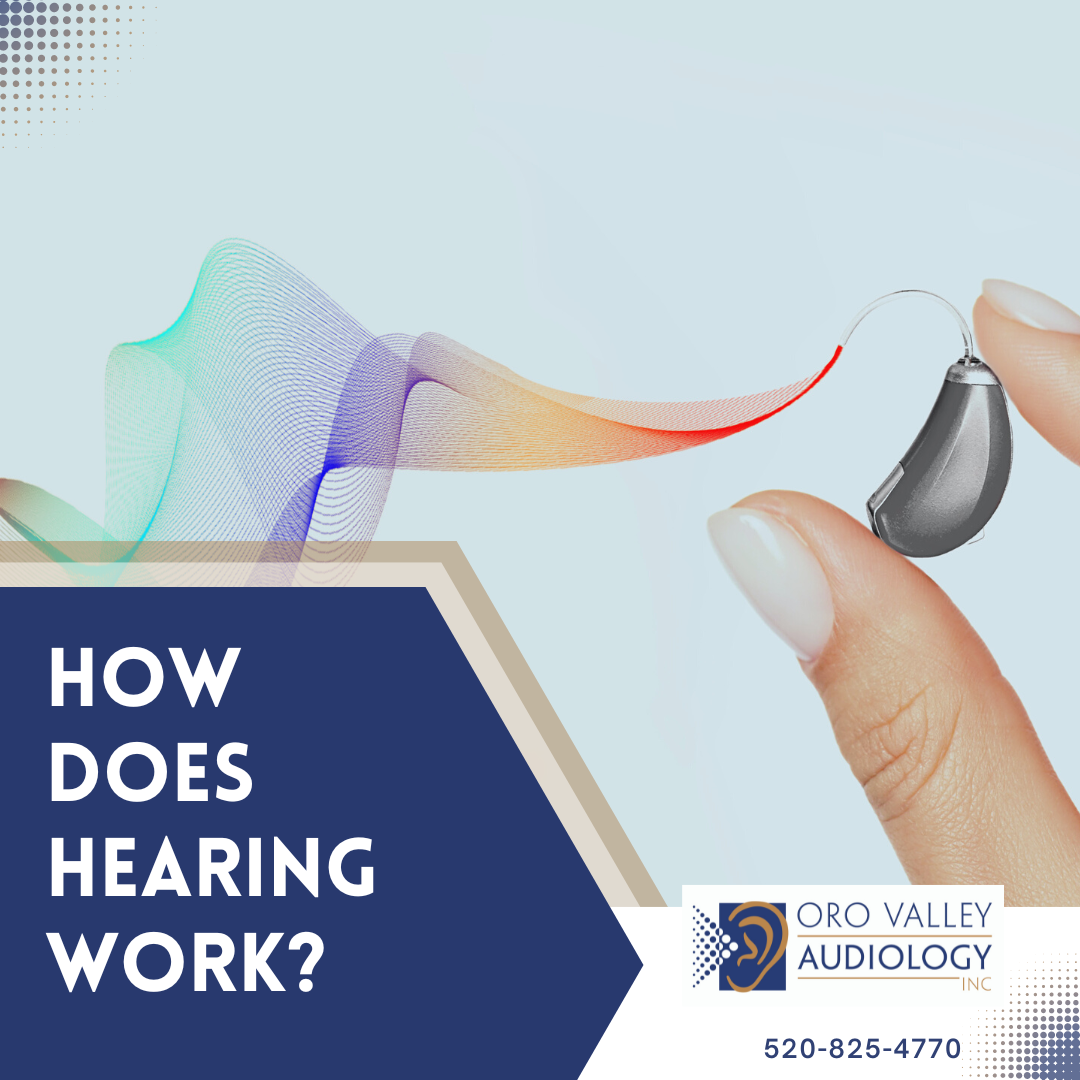Right now, what sounds do you hear around you? Traffic outside? The low hum of your refrigerator running? You are probably hearing sounds non-stop throughout the day. Your brain has to process and sort through all these sounds constantly. But how do you actually hear these sounds? What is happening in your body that allow you to listen to the sounds around you? Hearing is a complex system that most people do not fully understand. This article aims to develop an understanding of how hearing works, beginning from the sound source to our brain.
Where Sound Begins
Sound begins from a source. When an object vibrates in some way, a sound wave is produced. This soundwave causes air molecules to press together and stretch apart rhythmically, creating peaks and valleys, similar to what you see with waves in water. The more frequently these peaks and valleys occur (or the closer together they are), the higher the frequency (or pitch) of the soundwave. These “sound waves” travel through the air until they hit another object.
Outer/Middle Ear
If the object the sound wave hits happens to be your ear, that soundwave travels into your ear canal. From there, it travels down the ear canal until it hits your ear drum (called the tympanic membrane). As the peaks and valleys come and go, the eardrum moves in rhythm with this soundwave. Your eardrum then connects to a series of bones – the smallest bones in your body! The vibration from the eardrum transfers to these bones. These bones’ shape, orientation, and size allow those amplify the vibrations. This allows us to hear even softer sounds than we would otherwise be able to hear with our eardrums alone. These bones are located in your “middle ear” between your eardrum and your inner ear (also called the cochlea).
Inner Ear
The last bone (stapes or “anvil”) is attached to a “window” attached to the inner ear (cochlea). As the bone vibrates, it works like a piston and produces actual waves in the fluid within the inner ear. These fluid waves move at the same rate as the soundwave which moves through the air. The stronger the soundwave is, the larger the wave in the fluid becomes. As these waves peak within the inner ear fluid, they cause “hair cells” to be bumped against a membrane. The “hair cells” are arranged in a specific order so that they respond according to the pitch heard. When the waves in the fluid trigger them, they send a signal to the acoustic nerve. This signal is then sent through the base of the brain and all the way up to the auditory cortex (hearing area) of the brain.
Auditory Cortex
Each sound has a certain quality (combination of pitches) that your brain learns to process into a meaningful signal. Each pitch or frequency stimulates a different region of the auditory cortex, telling our brain that we heard a sound. This information is processed by our brain, where combinations of different pitches are learned over time to mean other things – from sounds in the language we speak to something as simple as the sound of a tap on the window. Amazingly, this process happens within milliseconds of the sound hitting our ears.Hearing loss can occur anywhere along our auditory (hearing) pathway. Wax in the ear can keep the soundwaves from entering our ear and stop the process before it even has a chance to begin. Fluid in our middle ear can prevent the transfer of sound through the middle ear bones. Damage to the hair cells in the inner ear can stop the activation of the nerves, preventing that information from reaching our auditory nerve clearly or at all (this is the most common type of hearing loss). Tumors on the auditory nerve can slow down the signal from the ear to the brain. And damage (examples: strokes, Traumatic brain injury) to the brain can prevent your brain from processing the sound accurately.Hearing is a complex system, and there are many areas where the process can go wrong. If you or someone you know has been having difficulty hearing, please contact our office for a full diagnostic hearing evaluation. We can determine if hearing loss is present, the location of hearing loss, and how best to treat your hearing loss.


